The Ys Series: Where to Start?
The Ys series has been a staple in Japan for decades but had a stuttering start when it came to localization. The series truly hit its stride in North America with XSEED’s launch of Ys Seven in late 2010 and the popularity of the saga has been growing in leaps and bounds since. The Ys franchise largely revolves around a single main character named Adol, who was a prodigious adventurer — having written down his tales at an old age, his diaries are later discovered, and each game is considered a “reading” of a new chapter of these memories. Combat is generally action-oriented, often with environmental storytelling and platforming puzzles.
We have elected to provide this list in sequential order. However, we have noted which games would be good starting points, so if you want to skip directly to those titles, our top three choices for newcomers are Ys VIII: Lacrimosa of Dana, Ys Origin, and Ys IV: Memories of Celceta, plus a tentative nod towards Ys IX: Monstrum Nox. We’ll make a more definitive statement on the latter once it’s released in North America.
For those wishing to experience Adol’s adventures from start to finish in release order, keep reading! The earliest games used what’s commonly referred to as “bump combat” where running Adol into an enemy constitutes an attack, though later games evolved into more fully-realized action combat systems, replete with special abilities, dodge mechanics, and other features.
By Kelley Ryan, Joshua Carpenter, Alex Fuller
and Anna Marie Privitere
Ys Origin
Available on: PC (Steam), PlayStation 4, PlayStation Vita, Xbox One, Nintendo Switch
While Ys Origin didn’t technically make its debut as the first Ys game, in terms of chronology and accessibility, we’re listing it first. It’s also one of the only Ys games where the player takes on the role of someone other than the titular Adol. Set 700 years before our redheaded hero’s birth, the story of Ys Origin is told from three distinct perspectives, with each character using a different combat style. Combining platforming and action combat, it has multiple difficulty options to allow players of all skill levels to jump into the self-contained story. Players are tasked with rising through the twenty-five floors of an eerie tower with one of three characters and discovering the events that eventually led to a slew of adventures. As a prequel, the story is naturally limited in scope, but does an excellent job carrying multiple playthroughs.
For players who want to get a small taste of the series’ action-RPG combat, Ys Origin is an inexpensive and easily accessible choice for any newcomer and is a neat trip down memory lane for those who began with Ys I & II. Originally localized by XSEED Games, their script was purchased by DotEmu, who has since published it on multiple modern consoles.
Ys I & II
Ys I & II Chronicles+
Available on: PC (Steam/GoG)
Ys I & II
Available on: TurboGrafx-CD, PC, PlayStation 2, Nintendo DS, PlayStation Portable, iOS, Android
Ys I: Ancient Ys Vanished
Available on: Nintendo Famicom, Sega Master System, MS-DOS
Ys II: Ancient Ys Vanished – The Final Chapter
Available on: Nintendo Famicom, MS-DOS
Though originally released in 1987 and 1988, the first two Ys games are typically seen as an interlinked single title in the modern era and tend to be sold together, with the most up to date version of the two games being Ys I and II Chronicles+, available exclusively on PC.
The game opens with Adol arriving in the lands of Esteria with no memory; his quest to bring together the six books of Ys sends him searching high and low. The second game immediately picks up after the first’s conclusion, where Adol finds himself on Ys, the floating island above the world (and the home of the heroes introduced in Ys Origin). Adol’s story quickly intertwines with characters seen in Origin, including the twin Goddesses and descendants of the priests of Ys who once served the duo.
The most memorable feature about these early titles is the battle system. Unlike its peer, Legend of Zelda, Ys ditches the action of sword swinging for “Bump” combat, where Adol needs to bump into an enemy to do damage. While it seems simple on the surface, bump combat can be tricky to master; hit an enemy dead on, and Adol will take damage. The trick is to instead bump slightly to the side of enemies to damage them. Players will find themselves in an endless twirl with foes, trying to learn attack patterns and finding just the right opportunity to dive in. This bump combat also turns boss fights into controller-clutching dodge-and-weave dances.
The game also gives the player several tools to compensate for the learning curve of bumping. While outside, Adol slowly regenerates health when standing still, letting players recover from misjudged attempts at bumping with a bit of patience. Later, players will get a ring that also recovers health indoors, and health outside at a faster pace. Adol also gains experience for defeating enemies, which in turn means stronger weapons as the game progresses. By the end of the game, regular enemies explode the second Adol touches them, a feeling that is always satisfying.
For players who want to start where the series did and aren’t intimidated by the bump-style action combat, Ys I & II is a great place to begin a journey into the Ys franchise.
Ys (III): The Oath in Felghana
Ys: The Oath in Felghana
Available on: PlayStation Portable, PC (Steam/GoG)
Ys III: Wanderers from Ys
Available on: TurboGrafx-CD, Famicom, Super Nintendo, Sega Genesis, PlayStation 2
Three years have passed since Adol freed the floating continent from the clutches of evil when his Oath in Felghana adventure begins. Joined by his soon-to-be-faithful companion Dogi, Adol is quickly tasked with recovering several statues to free Dogi’s childhood friend from an ancient demon awoken when the statues were disturbed. The original game ends on a fairly sour note, but promises further adventures for Dogi and Adol. Gone is the bump combat of the first two games; now players must choose to attack with a button press in a side-scrolling style of gameplay reminiscent of Zelda II. Most everything else in the game, including the UI remains the same as the first two titles.
The differences between the original Ys III and the Oath in Felghana remake are like night and day. The original 16-bit game suffers from clunky controls and brutal difficulty spikes. Players may find themselves grinding for experience by killing bugs in the mines just to make it through the opening areas. Like its inspiration, Zelda II, Ys III‘s side scrolling combat makes it feel like button mashing accomplishes more than skill. This is especially true for some of the boss fights. While players could easily land a copy of the SNES version for cheap, they’re in for a frustrating challenge that still isn’t worth the low price.
The Oath in Felghana remake solves all of these problems. It offers a selectable difficulty from the start, making it welcoming for anyone who isn’t used to action RPGS. Even if a player selects the normal difficulty, the enemy encounters and boss fights are well balanced. Healing items also drop from downed enemies, unlike in Ys III where players were limited to one healing herb in their inventory. The Oath in Felghana also greatly expanded on the bare bones story of the original game, making it the definitive version for anyone keeping track of Adol’s journey.
If players want a little top-down Zelda-inspired combat in their action RPGs, The Oath in Felghana is a great place to start. Newcomers should avoid the original 16-bit release unless the experience sought after is a broken controller and cramped hands. Seriously, it’s not even worth it as a curiosity.
Ys (IV): Memories of Celceta
Ys: Memories of Celceta
Available on: PlayStation 4, PlayStation Vita, PC (Steam)
Despite being the fourth game in the series, Memories of Celceta takes place one year after Ys II, and one year before Ys III and is a reboot of Ys IV. Predictably, Adol arrives in a new town, completely wiped of his memory. Casnan is a town on the edge of an uncharted forest called Celceta. A man named Duren finds Adol, claims to know him, and drags him before the ruler of Casnan. It is there that Governor-General Griselda hires Adol and Duren to explore the great forest of Celceta and unlock its secrets — which turns out to be a massive undertaking. Along the way, players will find a plethora of towns, dungeons, and side quests to tackle. The game also includes a robust crafting system, giving players an opportunity to create new gear and customize weapons.
Adol gets to bring along two other people on his adventures; though the party system is first introduced in Ys Seven, Celceta polishes this feature to a shine. Continuing the trend of modern Ys games, players can relish fast-paced action, with enemies being weak to one of the three weapon types; each character specializes in pierce, slash, or bash, so it is crucial to know which character to use at any given time and swapping them in as needed. Throughout the course of the game, characters come and go, and at the end, a total of six characters round out the party. Adol and his party get both a standard attack and special attacks that let players seamlessly chain together combos to dish out on Celceta’s monster population. These special attacks level up the more each is used and unlock additional abilities as the game progresses. All of this keeps the action fresh, letting the player skillfully combo their favorite moves together to take down tough foes. Each character also gets a screen-clearing special attack, perfect for taking chunks of life out of bosses when the time is right.
Like many modern Ys games, Celceta lets players select the difficulty at the start of the game, which makes it perfect for newcomers to the series. Its fast-paced action also makes it an easy sell for fans of other action RPGs like Kingdom Hearts. With both a PC version and a PS4 port, Celceta is also easy to access. For those preferring to game on the go, a Vita version is also available, though unfortunately saves won’t transfer between the Vita and PS4 versions. Each version of the game is identical, so players can simply choose whatever platform is preferred.
Ys VI: The Ark of Napishtim
Available on: PlayStation 2, PlayStation Portable, PC (Steam)
After a fourteen-year hiatus in North America after the release of Ys III, as all versions of Ys IV and V stayed in Japan, Konami brought over Ys VI: The Ark of Napishtim to the PlayStation 2 in 2005, with a PSP release one year later. XSEED Games gave PC players a chance to play The Ark of Napishtim in 2015, but was it worth that much of a wait?
Once again, Adol washes up on the shore of a beach after an attack by a fleet of Romun ships drove his boat into a storm; he’s rescued by two islander girls, who accompany him when he sets off on an adventure to uncover the mysteries of the Canaan Islands. While Napishtim includes many familiar faces and characters from the core Ys series, it is still considered a stand-alone title, so players can still follow the story without getting lost. The Ark of Napishtim uses the same engine later seen in Origin and The Oath in Felghana, making the combat look and feel similar to those two games — however, players who’ve tried out those games will find the extra polish added after Napishtim dearly missed. Adol’s movements and sword swings feel slower, and platforming has an awkward feel, making precision jumping a chore.
Instead of magic, Adol gets a choice of different elemental swords to play with in Napishtim. A speedy wind sword lets players slice and dice their enemies in a whirlwind. The hefty fire sword can be charged up to unleash a devastating fireball, knocking down everything in its path. Finally, the sleek lightning sword builds up static, unleashing a lightning ball that bounces around several times, knocking enemies everywhere. In addition to the combat advantages, each sword plays a key role in solving the puzzles of the Canaan Islands.
The definitive version of The Ark of Napishtim is without a doubt the PC version. Not only does it offer more polish, but it also gives players a significant advantage over the console versions with the Enhanced Wing of Alma, allowing teleportation to any previously-visited save monolith. Given the amount of backtracking that’s in Ys games, this item alone makes the PC version an easy choice, as the PS2 and PSP versions only allow teleportation out of dungeons.
While not a terrible game, newcomers to the series would be better served trying out Origin or Oath first before stepping back to Napishtim. The elemental swords make it stand out from the other two titles, but it’s abundantly clear that this engine was a first draft for Falcom; the PSP version, only available via UMD, also boasts spectacularly bad load times. Grab the PC version in a sale if any driving curiosity for Napishtim must be sated. Otherwise, stick to Origin or Oath.
Ys Seven
Available on: PlayStation Portable, PC (Steam)
While party combat seemed like blasphemy in a Ys game at the end of the 2000s, it clearly had an impact, as Falcom has continued the trend for each Ys release and remaster since. Ys Seven marks the debut of this party system, debuting in 2009 on the PSP in Japan, the game made its North American premiere in August 2010 as part of a six-game localization deal between Falcom and XSEED Games to localize Ys and Trails games.
This tale opens with Adol and Dogi reaching the city of Altago, though the pair quickly lands in jail after a scuffle with the local Dragon Knights. The King of Altago, impressed with the duo’s adventurous reputation, frees the pair to investigate the mysterious earthquakes plaguing the continent. Being as this story takes place towards the end of the official Ys timeline, it stands alone from the rest, making it easily accessible for newcomers.
Longtime fans of the series will appreciate having Dogi as a playable character for the first time, complete with an ability named “Crusher”, paying homage to his wall-crushing legacy. The party system offers the fast-paced action that modern Ys fans have come to expect. As this was the first game to implement it, it lacks the polish of later titles such as Memories of Celceta or Lacrimosa of Dana.
Even though Ys Seven is a viable entry point for newcomers, the platform choice for this game are extremely limited. Originally exclusive to the PSP, a PC version arrived in 2017 with upgraded graphics, optimizations including significantly reduced load times, and new Steam achievements. As with many late-era PSP releases, a UMD copy is creeping up in price and can be challenging to find, though it is also available for sale digitally. The PC version remains the most accessible and price-conscious choice for players interested in diving into Ys Seven.
Ys VIII: Lacrimosa of Dana
Available on: PC (Steam), PlayStation 4, PlayStation Vita, Nintendo Switch
With its first entry in high definition, Ys VIII gives players Adol’s largest adventure to date. This game brings the series into fully controllable 3D for the first time, as previous titles in the series had a fixed camera angle. It uses a similar combat system as Memories of Celceta and Seven, with three party members and a slew of special moves to unlock.
Lacrimosa of Dana starts with Adol on a ship. Unsurprisingly, this ship sinks, and Adol is washed up on a seemingly deserted island, with his memory seeming to be mostly intact. The waterlogged party sets out to find the rest of the shipwreck survivors and a way to get off the island. Seeking out the survivors not only adds to the core hub village, but unlocks new areas as well as tying directly into the game’s ending. Every new person adds to the excitement, and each individual has a personality that shines as the game progresses and the survivors band together into a tight-knit community.
Exploration is a key part of Ys VIII’s charm, which is good since Adol will be spending ample time exploring the Isle of Seiren. The world map is massive, with loads of secrets to discover. As new powers unlock, the party will want to backtrack to the many hidden areas inaccessible the first time through. Each villager also has multiple quests to clear, adding to their reputation points and filling in their backstory. Eventually, players will attain the ability to explore each area at nighttime, giving players additional areas to explore. Add in fishing, the raid mini-game, and Dana’s story missions set in a distant past, and it adds up to an Ys game that’s full to the brim with content.
Ys VIII originally released on the PlayStation Vita, though this version does not have all the features listed above. An enhanced port with additional content soon arrived on the PS4, with later releases on both Switch and PC. Of all the versions, the PS4 iteration runs the smoothest; the Switch version has some performance issues, and the PC version’s original launch was plagued by issues, though many have since been fixed. The PC version, however, is the only platform to boast local multiplayer, for those who want to game side-by-side with a buddy.
Gameplay-wise, Ys VIII is likely the definitive choice for newcomers. With fast combat, a self-contained story, and a deluge of content, it’s a must-play for any RPGamer wanting to get into the series.
Ys IX: Monstrum Nox
Available on: PlayStation 4 (February 2021), Switch/Steam (Late 2021)
Ys IX: Monstrum Nox takes place in the “prison city” of Balduq, where Adol finds himself unable to escape. While there, a mysterious woman named Aprilis turns him into a Monstrum, a being with supernatural Gifts and the power to exorcise monsters. Adol teams up with other Monstrums to fight against the creatures emerging from a dimension called the Grimwald Nox and to investigate the Monstrum curse and its relation to Balduq.
Ys IX: Monstrum Nox will launch for PlayStation 4 in North America on February 2 2021, with the European release following on February 5 2021. As the game isn’t out yet, we don’t know if this would be a good starting game; it is designed, like most Ys games, to be largely self-contained, with references to other titles a bonus for Ys veterans.
Other Localized Titles
Ys Strategy
Available on: Nintendo DS
Strategy is, unsurprisingly, a real-time strategy title developed and published outside Nihon Falcom. Similar to the Heroes of Might & Magic series, players must utilize heroes, manage their resources, build structures, and recruit units. Despite being translated into English, the game only saw a limited release in PAL territories, including Australia. It is not considered part of the larger Ys canon, which means it can be safely skipped even by the ardent Ys fan.
Ys Online ~ The Call of Solum ~
No longer available
Originally released in South Korea in late 2007, the game was available in Korean, Chinese, Japanese, and English, though the latter was limited to Europe. Ys Online featured the three player races (Eresians, Afrocans, and Kimoans) each having their own class choices, though every race included the Tank-Healer-DPS triangle. For example, Eresians could become Clerics, Knights, or Wizards, while Afrocans could be Guardians, Wiccas, or Witchdoctors, and Kimoans could become Archers, Protectors, or Shamans. Like most MMORPGs, the main gameplay loop included quests, crafting, dungeons, as well as a card-based enhancement system that players could use to strengthen equipment, learn skills, and summon pets. Ys Online additionally offered multiple PvP modes, including guild versus guild. Subscribers in the European region were also given the game’s full soundtrack as a free download.
All versions of Ys Online closed in October 2012.
Japan-only Titles
Ys IV: Mask of the Sun
Available on: Super Famicom
Ys IV: Mask of the Sun – A New Theory
Available on: PlayStation 2, mobile phones
Ys IV: The Dawn of Ys
Available on: TurboGrafx-16
Buoyed by the success of the first three Ys titles, Nihon Falcom elected to license out two titles in the Ys series. Mask of the Sun was developed by Tonkin House, a now defunct developer and publisher of licensed titles, many of which were considered edutainment. The title returns to the top-down perspective and bump combat of the first two titles in the series, with a new addition: elemental swords, which allow Adol to cast magic of the same element as his weapon. The Dawn of Ys, developed by HudsonSoft, also heralds a return to the bump combat system, but uses the magic system of Ys II instead of creating a new system. Both games take place in Celceta, though each has subtle story differences.
No version of these licensed Ys titles has ever been officially localized, so acquiring and playing them can be a little challenging. Nihon Falcom has stated these games are no longer considered part of the series’ main canon, having been replaced with the modern remake, Memories of Celceta.
Ys V: Lost Kefin, Kingdom of Sand
Available on: Super Famicom, PlayStation 2
The fifth entry in the Ys series remains the black sheep of the Ys family as the only mainline game that doesn’t have an English translation or a modern remake. It also marks a notable gap in the series, as Falcom skipped the fifth console generation entirely, waiting until the PlayStation 2 to release The Ark of Napishtim in 2003. So what makes Ys V such an obscure title?
The game ditches the bump combat system that marked the series’ unique beginnings; while this may seem like a boon to those who prefer to wield a sword, it wasn’t an improvement. Adol swings his sword like he’s drunk, making combat frustrating. The game also boasts a magic system that allows players to mix elements together to create new spells. After a spell is charged, it can be unleashed by swinging Adol’s sword. While this seems cool in theory, spells never do adequate damage compared to just smacking things without any magic charges. While an excellent story can make up for a mediocre battle system, Ys V’s story is about as exciting as underdone toast. In fact, it’s so bland that the official timeline doesn’t even recognize this game, currently creating a noticeable gap between Adol’s time in Felghana and Canaan.
Ys V is a mediocre game at best, and a clunker at its worst. Between the language barrier and the hassle of importing a cartridge, newcomers are better served playing more accessible games. A fan translation of the SFC version is available for those who stumble upon a cartridge and want to see Ys at its worst.
Ys vs. Sora no Kiseki: Alternative Saga
Available on: PlayStation Portable
Ys vs. Sora no Kiseki is a 3D arena fighter that mixes characters from the Ys games with the Trails in the Sky series. There are two different modes to play in the game: story mode and local multiplayer. The local multiplayer uses the PSP’s ad-hoc connection to allow two or four players to battle against one another. In story mode, there are several different characters to choose from — such as Adol from Ys and Estelle from Trails — and each character wakes up in a mysterious world and keeps encountering characters from their respective franchise who are acting strangely. The chosen character remedies this problem by literally beating the sense back into the others. After each battle, there are short story segments that tie into an overall story for the game, though it should come as no surprise that it’s not considered canon for either franchise.
The gameplay feels like the other PSP Ys games — it uses the same engine that Ys Seven is built upon — so it’s fast-paced and fun. Also, as expected of a Falcom game, the soundtrack is fantastic, interweaving series staples from both franchises while also providing plenty of new remixes. Despite never being localized, because of the simple concept and lesser amount of story in a fighting game, it is an accessible experience for fans who want to dabble in a bit of lighthearted fun.
We hope our look into over 30 years of Ys history has been informative and given you an idea of the rich history behind the series! What was your favourite Ys game? Would you recommend a specific starting point? Join the conversation by dropping a comment below!
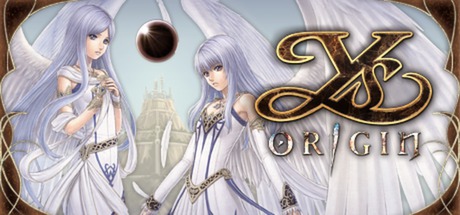

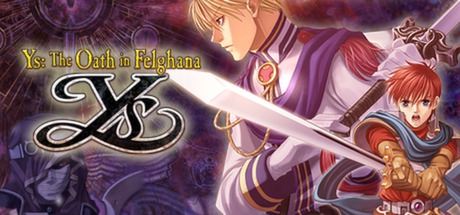
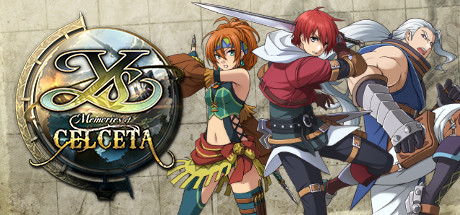

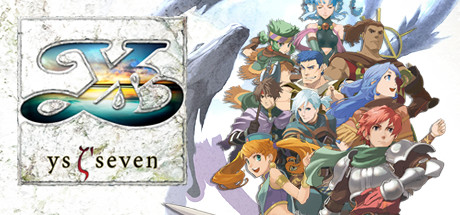
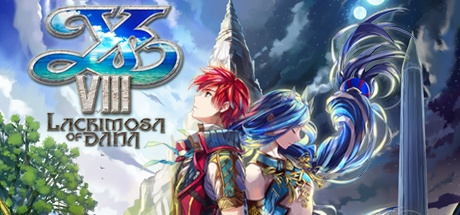
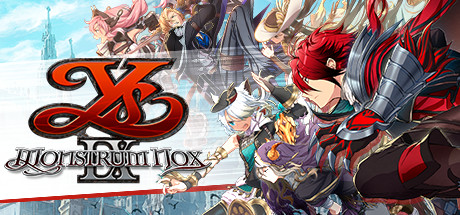

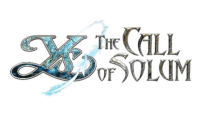
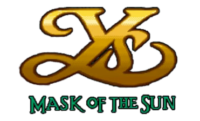

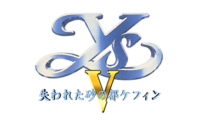







Playing Ys Origin first spoils some major plot points in other Ys games, particularly I and II.
It’s worth noting that Ys VIII is on Stadia. I know folks like to poopoo Stadia, but the Stadia version of Ys VIII has no load times between areas (once you turn tips off) and can be played on your phone or your tv, which is nice. It’s also free for Stadia Pro members, and new players get a month of Stadia Pro for free, so if you want to dip your toe in without spending any money, Stadia might be the best option for a lot of people.